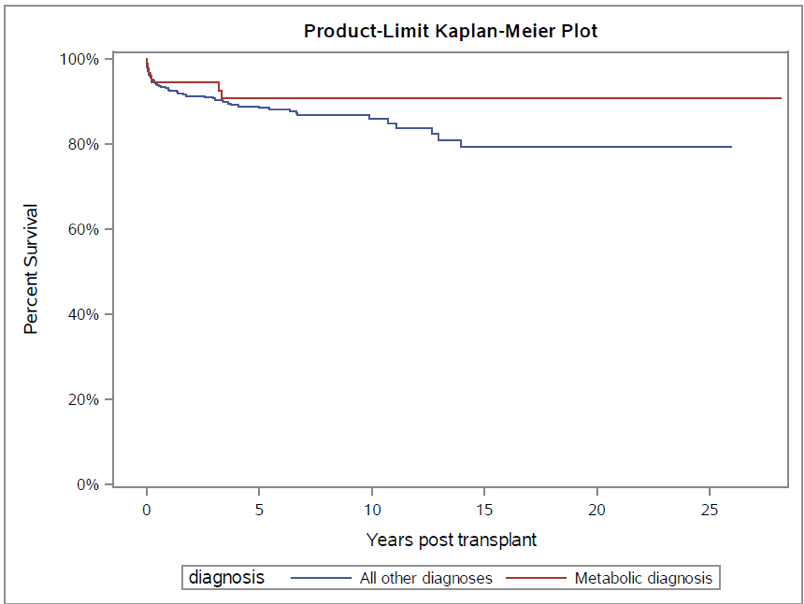Liver Transplantation for Pediatric Genetic and Metabolic Liver Disease: A Single-Center Experience
S. Hassan1, K. Mysore1, D. N. Cerminara2, K. E. Hosek3, M. Faraone4, R. Sigereddi5, R. Ackah5, A. Rana6, J. Goss6, T. Galvan6
1Pediatric Gastroenterology, Hepatology and Nutrition, Baylor College of Medicine/ Texas Children's Hospital, Houston, TX, 2Pharmacy, Texas Children's Hospital, Baylor College of Medicine/ Texas Children's Hospital, Houston, TX, 3Outcomes and Impact Service, Baylor College of Medicine/ Texas Children's Hospital, Houston, TX, 4Department of Surgery, Baylor College of Medicine/ Texas Children's Hospital, Houston, TX, 5Baylor College of Medicine/ Texas Children's Hospital, Houston, TX, 6Michael E. DeBakey Department of Surgery, Division of Abdominal Transplantation, Baylor College of Medicine/ Texas Children's Hospital, Houston, TX
Meeting: 2020 American Transplant Congress
Abstract number: D-146
Keywords: Graft survival, Metabolic disease
Session Information
Session Name: Poster Session D: Liver: Pediatrics
Session Type: Poster Session
Date: Saturday, May 30, 2020
Session Time: 3:15pm-4:00pm
 Presentation Time: 3:30pm-4:00pm
Presentation Time: 3:30pm-4:00pm
Location: Virtual
*Purpose: Pediatric liver transplantation (LT) is an established treatment for a myriad of liver diseases most notably biliary atresia and urea cycle defects. In the past decade however, LT became an attractive treatment modality for other metabolic conditions. The purpose of this study is to describe LT experience at a single tertiary referral center for genetic and metabolic liver disease and report clinical outcomes including patient and graft survivals.
*Methods: We identified 91 patients were underwent LT for genetic and metabolic conditions in the past decade. Metabolic conditions included glycogen storage disease, maple syrup urine disease, and tyrosinemia. Genetic disorders included alpha-one anti-trypsin deficiency and Wilson’s disease. Multi-organ transplant patients were excluded. We reviewed baseline demographic data and clinical outcomes.
*Results: Patients with genetic and metabolic conditions demonstrate a positive trend for graft and patient survival when compared with other LT patients who do not have any genetic or metabolic disease (Fig 1). While it did not reach statistical significance, this patient population seem to have better outcomes, particularly five years post LT.
*Conclusions: There is a shift in LT treatment paradigm from lifesaving to improving quality of life and reducing detrimental long-term sequela of genetic and metabolic liver disease. At our institution, there is a trend in improved survival for patients with underlying genetic and metabolic conditions who undergo LT. More research is required to determine optimal timing for transplant intervention.
To cite this abstract in AMA style:
Hassan S, Mysore K, Cerminara DN, Hosek KE, Faraone M, Sigereddi R, Ackah R, Rana A, Goss J, Galvan T. Liver Transplantation for Pediatric Genetic and Metabolic Liver Disease: A Single-Center Experience [abstract]. Am J Transplant. 2020; 20 (suppl 3). https://atcmeetingabstracts.com/abstract/liver-transplantation-for-pediatric-genetic-and-metabolic-liver-disease-a-single-center-experience/. Accessed December 16, 2025.« Back to 2020 American Transplant Congress

